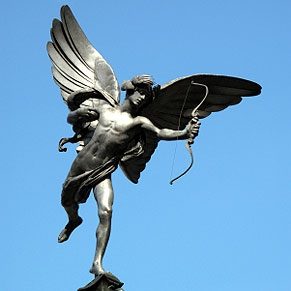
We associate Cupid with a cute, innocent angel, but he’s actually an ancient god taken from classical mythology, a deity whose arrows have caused pain, suffering, and even death. There are a number of gods from Greek and Roman mythology whom we associate with love, and while we still use their images as symbols of romance, the ancients considered love and passion as dangerous things-tools for the gods to turn mortals against each other.
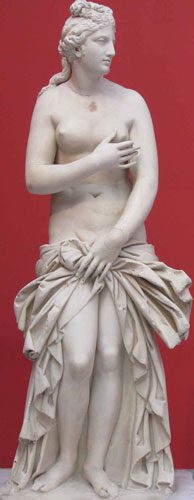
Aphrodite (Greek) or Venus (Roman)
In Greek mythology, Aphrodite was the goddess of love, fertility, and beauty. Aphrodite never had a childhood; in all of her various creation myths, she is born as a sexually desirable woman. Her appearance may have been stunning, but she was vain and quick to anger. Due to her desirability, Zeus feared that the male gods would fight for her favour and so arranged for her to wed Hephaestus, the god of smithing.
Hephaestus was a humourless, unattractive god, but he was even-tempered-an asset in his marriage to an unfaithful wife. Aphrodite’s infidelity did not bother Hephaestus because he was simply overjoyed to have such a beautiful wife. To show his appreciation he crafted beautiful jewelry for her, including the “cestus,” which was a girdle that made her even more irresistible.
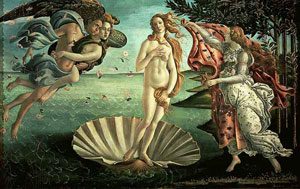
Thoughts on Aphrodite
Some ancient philosophers divided Aphrodite into two goddesses. There was Aphrodite Ourania, who rose from the sea foam after Cronus castrated Ouranos. She represented the love of body and soul. Dione and Zeus gave birth to Aphrodite Pandemos, who is the more common Aphrodite. She represented physical love.

Fun Fact
The term “aphrodisiac” is derived from Aphrodite. “Aphrodisiac” means something that excites sexual desire, which we all know Aphrodite had no problems doing.
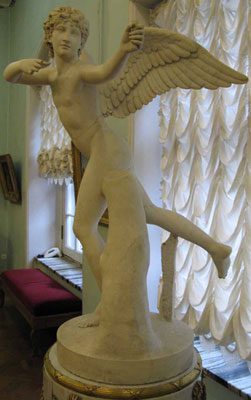
Eros (Greek) or Cupid (Roman)
Eros was the god of love and sexual desire. One of his creation myths claims that his parents were Aphrodite and her lover Ares, the god of war. Eros’ power resided in his arrows, which could incite feelings of passion in humans and gods. The arrows would wound the lover’s heart and create an overwhelming feeling of desire-something we now call “love at first sight.” The image of an arrow piercing a lover’s heart is symbolic of the pleasure and pain that often accompanies love.

Thoughts on Eros
Sigmund Freud refers to Eros in his discussion of the human libido. Libido is the creative energy that one invests in personal development, or, more narrowly defined, it refers to one’s sexual drive. Freud compares this energy to Eros. In Freudian psychology, this is the opposite of the destructive death instinct of the demon Thanatos, whom Eros fights against.

Fun Fact
The word “erotic” is derived from Eros. Eroticism is defined as a feeling of sexual desire, the urge that Eros was supposed to incite.
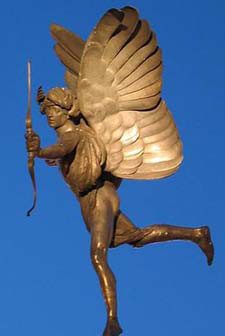
Anteros (Greek)
In classical mythology, Anteros was the Greek god of requited love. He was the son of Aphrodite and Ares, who had wanted another child as a companion for their lonely son Eros. Anteros physically resembled his older brother, except he had long hair and plumed butterfly wings. Sometimes Anteros was equipped with a golden club, or with lead arrows that were used to avenge unrequited love.

Thoughts on Anteros
The great Greek philosopher Plato wrote about Anteros and requited love. He believed that a lover who was inspired by beauty-thanks to Eros-is full of divine love, and as a result fills their partner’s soul with love. This results in the loved one returning the lover’s emotion. The bond is so powerful that they experience pain when they are apart and joy when they are together. Basically, Anteros is the mirror image of the lover’s feelings.

Fun Fact
Anteros appears at the Shatesbury Memorial located in London’s Piccadilly Circus. The subject for this memorial is the Earl of Shaftesbury’s charitable love for the poor. The memorial is frequently mistaken for either Eros or the Angel of Christian Charity.